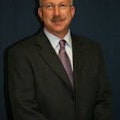Improvement does not have to be major or drastic to have significance. While it is a small number, one is big when used as a multiplier and can prove to be very valuable in the steps you take toward improving your shop's profitability. Increasing any factor by one or reducing an element of waste by the same amount will prove itself in additional net profit.
By using some simple math, we can calculate the value of one in a repair. Adding one tenth of a paint hour to a repair is worth approximately $7. If you were to multiply that by an average of eight repairs a day, it would total $56. Multiplying that figure by the 20 working days in a month and you would have increased your monthly sales by $1,200. Multiply it once more by the 12 months in the year and you would have earned an additional $14,440 in net profit.
Another example would be in labor gross profit. Raising your labor gross profit by one percent would put additional dollars on the bottom line. Using round numbers to make it easier to calculate, let's say you have averaged $50,000 per month in labor gross profit. Using the national average of 62 percent, you would have earned $31,000. If you increased that by one percent to 63 percent, your labor gross profit would grow to $31,500, an increase of $500 a month or $6,000 a year. Not bad for an increase of one!
Repair order totals have fluctuated recently, but I still think $2,300 as an average is a good figure. Raising your repair order total by one percent is another achievable way to increase your net profit. One percent of the average repair order is only $23, but if you close five jobs a day, that one percent will bring $115 per day — or $27,600 a year — in additional net profit.
To look at improvement from another angle I will give you an example of waste reduction. Color coats cost about $4.50 per sprayable ounce. Take a look at the paint left over after a refinishing operation is completed and in many cases you will find approximately one ounce left over.
By having the painter calculate exactly how much paint is required for a repair, you should be able to reduce the mix size by one ounce, saving $4.50 per mix. Using an average of 10 mixes per day, that extra ounce could create up to $44.50 a day in waste. Again, using a 20-day month and calculating the savings over the year would show an increase of $10,680 in annual net profit.
I could continue with examples, but the best are from the areas you focus on in your shop. The four areas I selected would bring the average shop an annual increase of $58,720 if you used them all.
I recommend you choose one or two areas and concentrate on them because any more than that may cause some rebellion. We have all been to a training class and seen our people tremble when they came back wondering how many things we would be changing. Look at the numbers you monitor on a day-to-day or month-to-month basis and see which ones you can influence by changing them by one percent, one dollar or another factor of one.
Whether it's increasing your closing ratio by 1 percent or getting one more vehicle through the paint cycle in a day, you will notice the difference of the power of one. Talk to your people and see which one they believe is attainable and put your emphasis in that area. Once you attain that goal they will be asking you what the next one will be, and you will gain improvement one by one.
About the Author
John Shoemaker
John Shoemaker is a business development manager for BASF North America Automotive Refinish Division and the former owner of JSE Consulting. He began his career in the automotive repair industry in 1973. He has been a technician, vehicle maintenance manager and management system analyst while serving in the U.S. Air Force. In the civilian sector he has managed several dealership collision centers, was a dealership service director and was a consultant to management system providers as an implementation specialist. John has completed I-CAR training and holds ASE certifications in estimating and repair. Connect with Shoemaker on LinkedIn.
